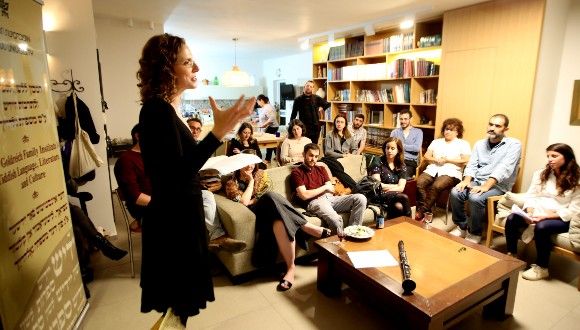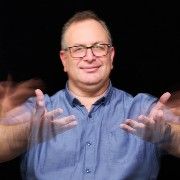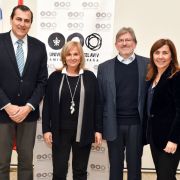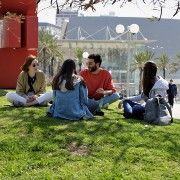Leading the Global Yiddish Renaissance
What do scholars, teachers, translators and aficionados of Yiddish have in common? They all flock to TAU’s influential Jona Goldrich Institute for Yiddish Language, Literature and Culture, which promotes academic depth and creativity in the field of Yiddish studies.
Founded in 2005 as the Goldreich Family Institute by TAU benefactor Jona Goldrich (1927-2016), today the Institute is supported by his two daughters, TAU Governor Melinda Goldrich and Andrea Goldrich Cayton, who chose to rename the Institute in honor of their late father and his leadership. The Institute’s summer program, supported by the Naomi Prawer Kadar Foundation since 2011, has hosted 995 participants from 33 countries. The Goldrich Family Foundation Advanced Yiddish Studies Forum brings top scholars to TAU from around the world.
“For me, the Institute is not only a place of advanced research, but a forum where my ideas can be put into practice,” says Mika Cohen, a first-year student in the Yiddish Studies MA Program, jointly supported by Yad Hanadiv. A creative writing workshop she’s running explores the theme of the shtetl as a way to think about modern notions of community. Participants read works by Sholem Aleichem and other legendary writers, and then produce their own vision of community with their 21st-century literary voices.
Institute Director Dr. Hannah Pollin-Galay of TAU’s Department of Literature, Entin Faculty of Humanities, enthuses, “Students are eager to ask new questions about Jewish culture and to understand the experiences of their grandparents and great-grandparents.” Her own research combines Yiddish and Holocaust Studies, while the work of Prof. Hana Wirth-Nesher, the Institute’s Founding Director, focuses on multilingualism in Jewish and mainstream American writing. Other research conducted at the Institute explores the interplay between Yiddish and other languages and cultures in Europe, Israel and beyond.
"The Yiddish poet Avrom Sutzkever asked, in reference to Yiddish culture after the Holocaust, Ver vet blaybn? Vos vet blaybn? (‘Who will remain? What will remain?’),” says Dr. Pollin-Galay. “I think Sutzkever would be very proud to see my young students working hard to answer his question in a positive way. It is thanks to them, and to the support of the Goldrich family, that a beautiful Yiddish legacy will not only remain but blossom and grow in the future."






